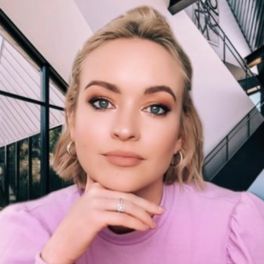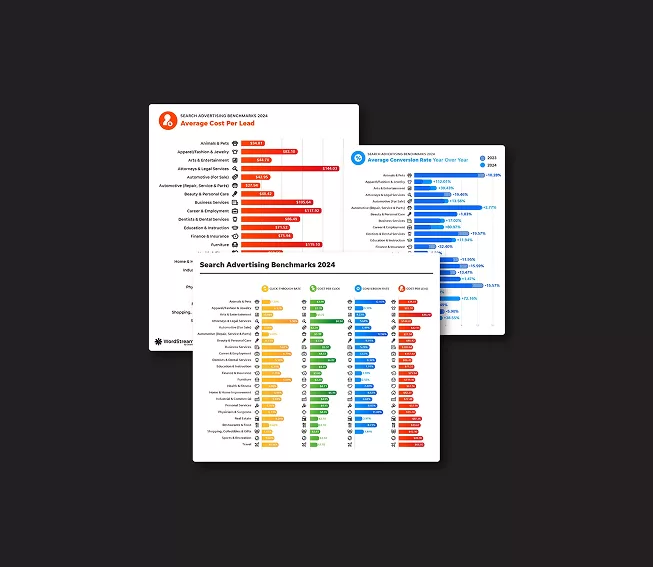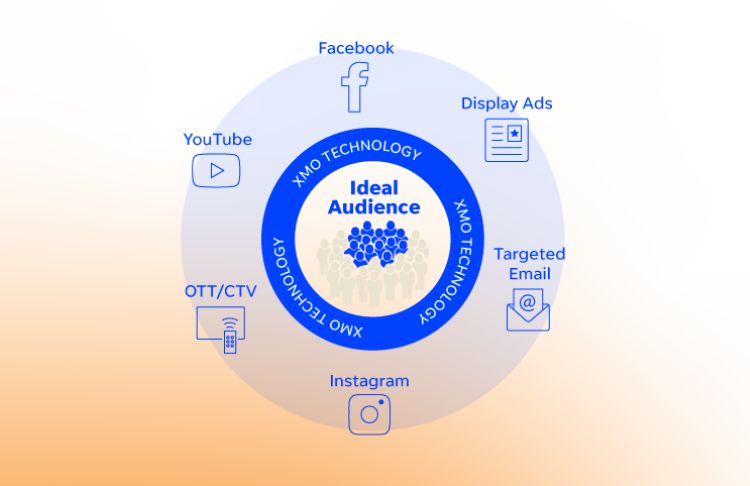Staying competitive in today’s fierce business landscape is more challenging than ever. But where there is a big challenge, there lies a big opportunity. With customer expectations growing all the time, no business can afford to rest on its laurels.
The question is, what marketing strategy can help businesses stay ahead of the curve?
Here’s the thing: You don’t have to create something from scratch. There are many successful marketing strategy examples out there that you can emulate and adjust to your business needs. In this article, we’ll go through the marketing strategies of some of the most popular brands and help you understand how you can apply them to your business. Let’s dive in.
Contents
What is a marketing strategy?
A marketing strategy is a comprehensive plan that outlines how a business will promote its products or services to its target audience in order to achieve its goals, such as increasing brand awareness, driving sales, or fostering customer loyalty.
Think of your marketing strategy as an overarching game plan that will give you clarity on your company’s value proposition and help you better understand your customers and their unique needs.
🚨 Free guide >> 6 Simple Steps to a Complete Small Business Marketing Plan (+Template!)
Elements of a marketing strategy
When creating your marketing strategy, you must cover all the aspects and elements that are necessary building blocks for the success of your business. Let’s look at the key elements of a successful marketing strategy.
Marketing objectives
Your objectives give your marketing efforts direction and purpose—whether that’s increasing sales by 20%, growing your email list, or boosting brand awareness. The key here is that these goals aren’t vague promises like “we want to grow.” They need to be specific, measurable, and bound by a timeline. The more precise you are, the easier it is to track progress and adjust your strategy as you go.
Market research
Market research is the foundation of your entire strategy. If you’re not deep-diving into competitive analysis, spotting market trends, and understanding customer needs, then you’re essentially throwing spaghetti at the wall and hoping it sticks. Research is the cheat code that gives you the insights to make smarter, more informed decisions.
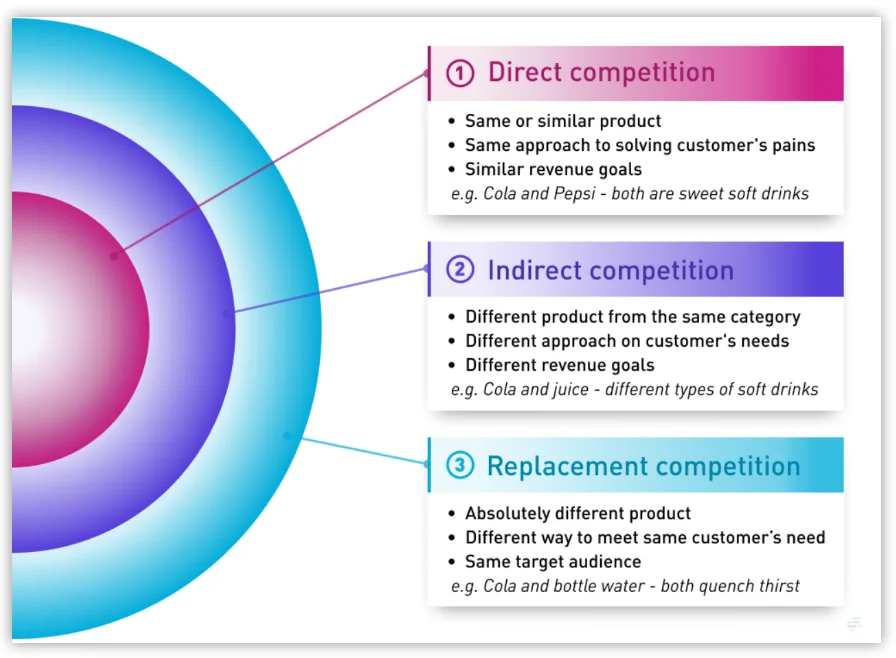
Target market
Targeting the right market is the difference between wasting money on broad, ineffective campaigns and actually speaking to the people who need your product or service.
When you clearly identify your key customer groups, you can tailor your messaging, your product features, and even your pricing strategy to appeal to them specifically. This ensures your marketing doesn’t feel like shouting into the void but a targeted whisper to your ideal customers.
🕵️♀️ Need help finding your target audience? Download this free guide!
Positioning
Positioning is the art of carving out a space in the customer’s mind where only you belong. This is where you differentiate yourself—whether that’s through your brand personality, your superior product quality, or your ability to solve a specific problem in a way no one else does.
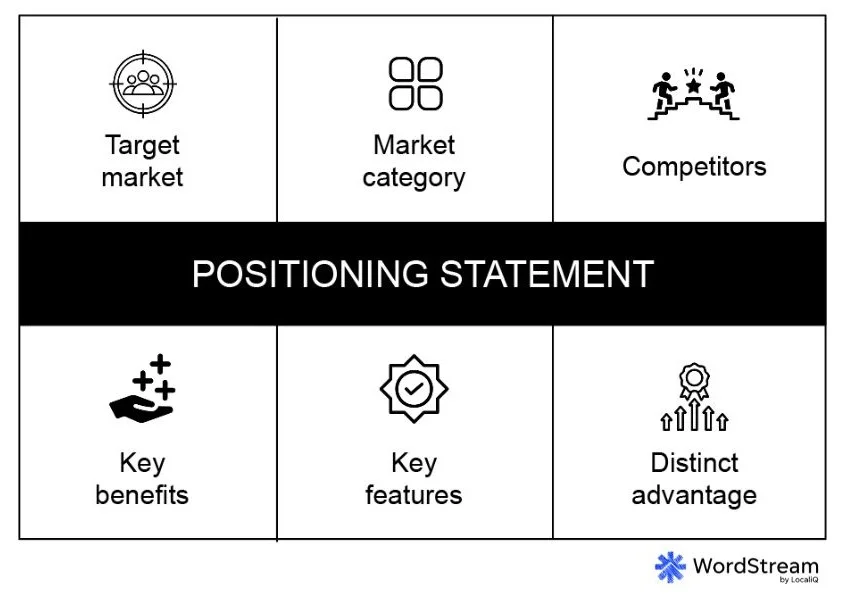
Marketing Mix (4 Ps)
The 4 Ps—Product, Price, Place, and Promotion—are the building blocks of any marketing strategy. Without all four working together and in sync, you’re just setting yourself up for failure.
Marketing tactics and channels
Marketing tactics are your playbook for reaching the audience where they actually are. You could have the best product and positioning in the world, but if you’re not reaching the right people on the right channels, you are throwing money out the window.
The key is knowing where your audience spends their time and using the most effective channels to engage with them. Trying to reach everyone on every platform is a surefire way to spread yourself too thin. Be strategic—choose the channels that make sense for your goals, and then maximize their potential.

Budget
Budgeting helps you prioritize where to spend and where to save. It forces you to make tough decisions—do you put more into paid media, or invest in content creation? The key is to allocate your budget based on what’s working but also leave room for experimentation. Marketing is about finding the right mix that delivers a solid ROI, not throwing money at everything that looks shiny.
Metrics and KPIs
Tracking things like ROI, customer acquisition cost (CAC), or conversion rates gives you real-time insights into your strategy’s effectiveness. But don’t just look at the numbers for the sake of numbers—use them to pivot, optimize, and improve.
For instance, if your email open rate is low, it’s time to tweak your subject lines. If social engagement is high but sales are low, maybe your message isn’t resonating as deeply as it should. In other words, metrics give you the intel you need to refine your strategy and keep the marketing wheels turning.
⭐️ Want ideas, tips, and insights delivered straight to your inbox? Sign up for our newsletter!
17 marketing strategy examples and best practices
Have you ever wondered what the secret of some of the world’s most successful businesses is? It’s time to put them under the microscope and understand what sets them apart. Here are 17 marketing strategy examples from leading brands to get your creative gears turning:
- Video marketing strategy
- SEO strategy
- Creator marketing
- Influencer marketing
- Immersive experiences
- Sponsorships
- Storytelling
- Subscription packages
- Product bundles
- Social media marketing strategy
- Experiential marketing
- Upsell and cross-sell strategy
- Try before you buy
- Paid media marketing strategy
- User-generated content
- Affiliate marketing strategy
- Multichannel marketing strategy
Let’s dive deeper into each one.
1. Video marketing strategy
Have you ever wondered why brands invest so much in video marketing? The short answer is that it works. According to Wyzowl, 82% of people have been convinced to buy a product or service by watching a video. Moreover, 90% of marketers say video marketing has given them a good ROI.
If you’ve ever watched one of Home Depot’s ads or scrolled through their YouTube channel, you know video is a big part of their marketing strategy. They use videos not just to promote products but to teach and connect with their audience.
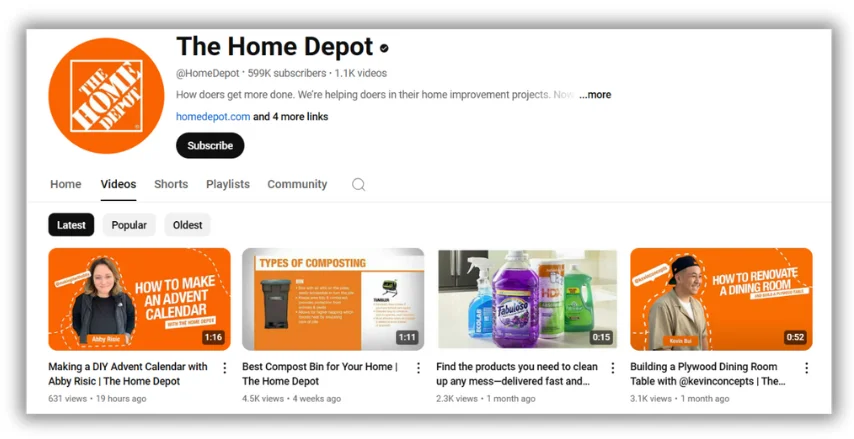
Whether through instructional tutorials, inspirational success stories, or seasonal campaigns, Home Depot has figured out how to meet its customers where they are, providing value while subtly guiding them toward making a purchase.
2. SEO strategy
In a world where algorithms are constantly changing, social media platforms are becoming more influential, and everyone’s talking about the role of AI and how it’s shaping the future of SEO, one thing is for sure: SEO is the backbone of visibility on the internet. Nearly half of online shoppers initiate their purchasing journey with an internet search, as reported by ECDB.
Sure, the game is changing with social media, voice search, and AI search engines, but that only means you need to focus more on SEO and its evolving role.
One brand that puts SEO at the heart of its marketing strategy is Lush, the renowned handmade cosmetics brand. Lush focused on strategic content optimization and identified search intent and less competitive keyword variations.
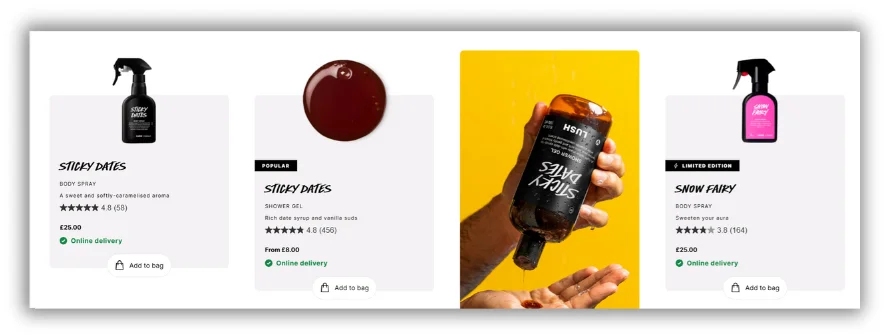
The team also developed “how to use” article templates for Lush products to earn more featured snippets, which brought them a high volume of relevant traffic to the site.
👀 Free guide >> 20 Ways to Make Your Website More Visible on Google
3. Creator marketing
The rise of creators has completely revolutionized marketing. According to Goldman Sachs Research, the creator economy is projected to approach half a trillion dollars by 2027. Today, creator marketing is a vital pillar in the social media marketing strategy of some of the leading brands we know, such as AllBirds, Gymshark, Purple, and Fenty Beauty.
The beauty brand Glossier has turned creator marketing into a cornerstone of its growth strategy. However, unlike brands that work with big-name influencers, Glossier focuses on micro-influencers and content creators with authentic, engaged communities.
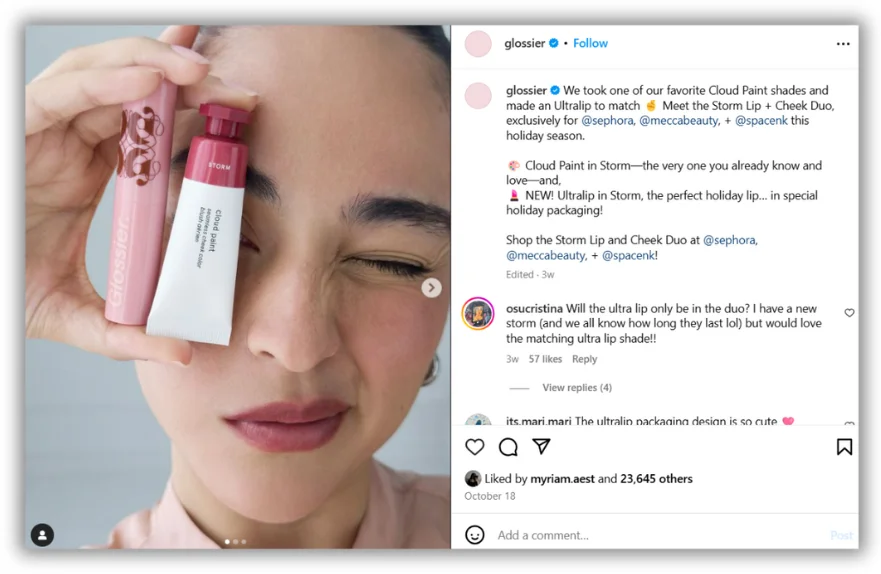
From user-generated content (UGC) and creator partnerships to authentic reviews and unboxing, Glossier uses creator marketing to build a sense of shared identity and a community to which customers want to belong.
4. Influencer marketing
Influencer marketing started as an expensive way to boost brand awareness by using the popularity of influencers and celebrities to get your brand in front of the world. However, today, influencer marketing is a legit tool in the marketing toolbox that increases brand visibility, builds trust, and drives conversions. Nearly 50% of Gen Z and Millennial users follow influencers to discover new products, according to Captiv8.
So, it’s no surprise that a quarter of marketers have spent more than 40% of their marketing budget on influencer marketing. Prada Beauty is one of the brands that bets on influencer marketing. The brand collaborates with influencers, makeup artists, and industry experts who align with their brand values. Prada Beauty partnered with Emma Watson for their new fragrance, but besides being the face of the campaign, Emma also wrote the script, narrated the story, and directed the visuals.

5. Immersive experiences
The widespread use of smartphones has made augmented reality more accessible than ever. Research from Google shows that 90% of Americans use or would consider using AR for shopping. Moreover, 98% of those who have used AR while shopping found it helpful. Immersive experiences make shoppers feel more comfortable with online purchases, and this is especially true for the beauty, furniture, and automotive industries, where AR is quickly becoming table stakes.
Aware of the importance of bridging the gap between the online and in-store experience, Joybird uses technology to empower customers to bring products to life with augmented reality.

Customers can bring their sofa or sectional selection into their homes to check for size and scale before purchase, taking the guesswork out of the furniture-buying process.
6. Sponsorships
Sponsorships give you the chance to align your brand with events, causes, or personalities that already have your audience’s trust and attention. Whether it’s sports, music festivals, or charitable initiatives, sponsoring an event allows you to tap into a ready-made community. The best part? Because you’re seen as supporting something people care about, the halo effect boosts your credibility and trust.
If you want to incorporate sponsorships into your marketing strategy, make sure these are not one-off sponsorships but rather long-term partnerships that will help you create an emotional connection with the audience and make your brand part of something bigger.
Red Bull’s approach to sponsorships is unmatched. The energy drink brand turned its business into a media production powerhouse, and sponsorships have a vital role in its marketing strategy.
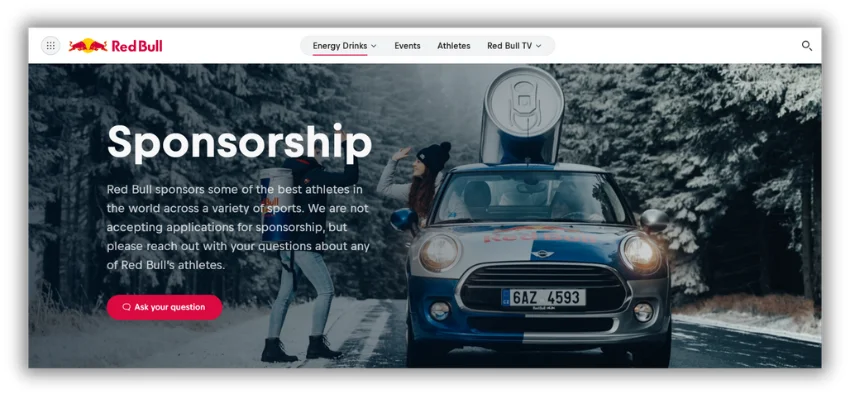
7. Storytelling
Storytelling makes your brand memorable. It sticks. In a world where we’re constantly flooded with ads and content, a well-told story has the power to cut through the noise and grab attention. Businesses are using storytelling to make their brand human, relatable, and emotionally compelling. When done right, these stories tap into the emotions of your audience, creating a deeper bond than any straightforward sales pitch ever could.
Dove’s Real Beauty campaign is one for the books. Through the campaign, Dove promotes inclusivity, diversity, autonomy, and body confidence. While most beauty brands were peddling airbrushed, photo-shopped perfection, Dove decided to get real. They put women of all shapes, sizes, and skin tones—front and center, celebrating diversity instead of conforming to the one-size-fits-all approach.
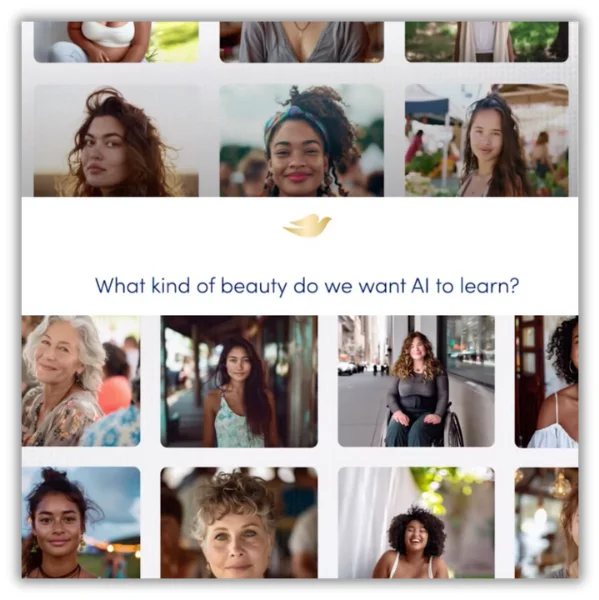
And it wasn’t just for an ad or two—Dove turned the Real Beauty campaign into a movement. The campaign was first launched in 2004, and two decades later, Dove is still focused on breaking the stereotypes of what real beauty means.
8. Subscription packages
Subscription packages are the gift that keeps on giving when it comes to marketing strategy. They’re not just about creating a steady stream of revenue—they’re also about building customer loyalty and turning one-time buyers into lifelong fans. By offering subscription-based models, you can lock in repeat sales and create a predictable income flow while also deepening customer relationships.
BarkBox nails the subscription game by tapping into the one thing every dog owner loves: spoiling their pup. Their marketing strategy is built around creating a fun, personalized experience that feels like a gift every month. With their subscription model, BarkBox delivers curated boxes of toys, treats, and surprises, turning the ordinary into something special.
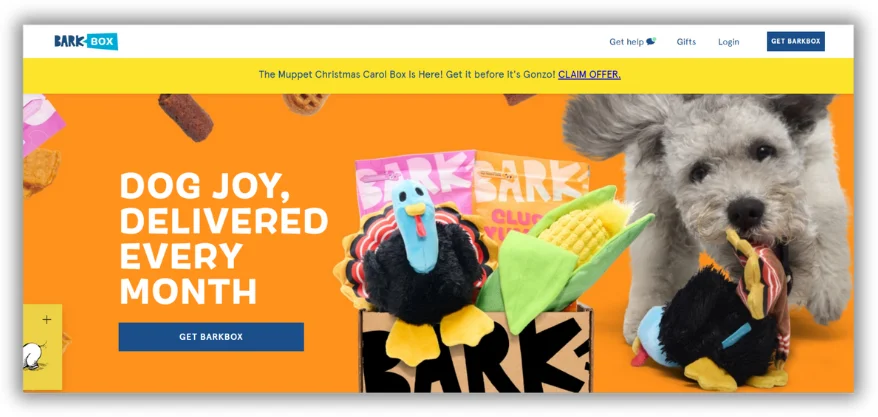
And it doesn’t stop there. With clever social media campaigns, user-generated content, and a seamless online experience, BarkBox keeps customers engaged and eager for the next month’s box.
9. Product bundles
Product bundles are a clever way to get customers to spend more while feeling like they’re getting a deal. When done right, bundling products together creates a sense of value that can persuade shoppers to buy more than they initially planned. Moreover, this is a great way to get rid of slow-moving inventory by pairing it with best-sellers.
Article, the trendy furniture brand, has nailed the art of bundling products to drive both sales and customer satisfaction. They offer stylish, curated packages that combine complementary pieces, like a sofa and a coffee table, making it easy for customers to create a cohesive look without the hassle of choosing individual items. The end result is a higher average order value and satisfied customers.
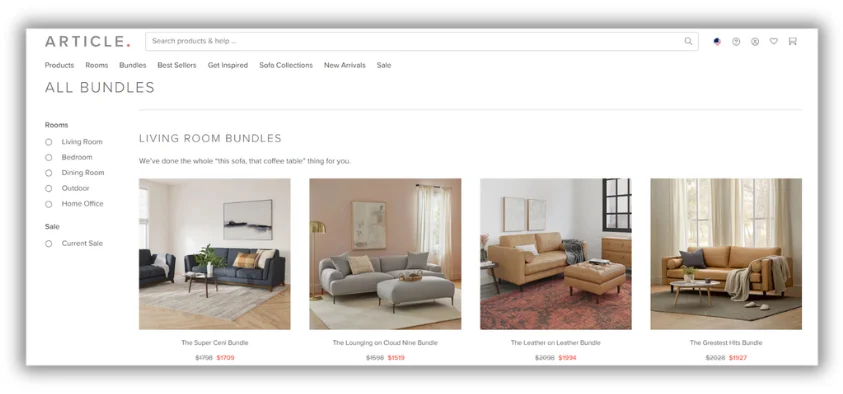
10. Social media marketing strategy
Social media marketing is the heartbeat of any successful brand strategy. Brands should be wherever their audience is—and nowadays, that’s social media. You can find your audience scrolling through social media feeds, whether for inspiration, socialization, or just for fun. According to Statista, almost two-thirds of the world’s population are social media users.
Business leaders believe that social media has a profound positive impact on building brand reputation and loyalty (94%) and improving competitive positioning (92%), shows data from Sprout Social.
While many brands rule the social media game, one that stands out is Nike. The reason? Nike taps into emotion like no other brand. Nike knows exactly how to leverage platforms like Instagram and TikTok to create conversations that feel authentic and connected to their audience.
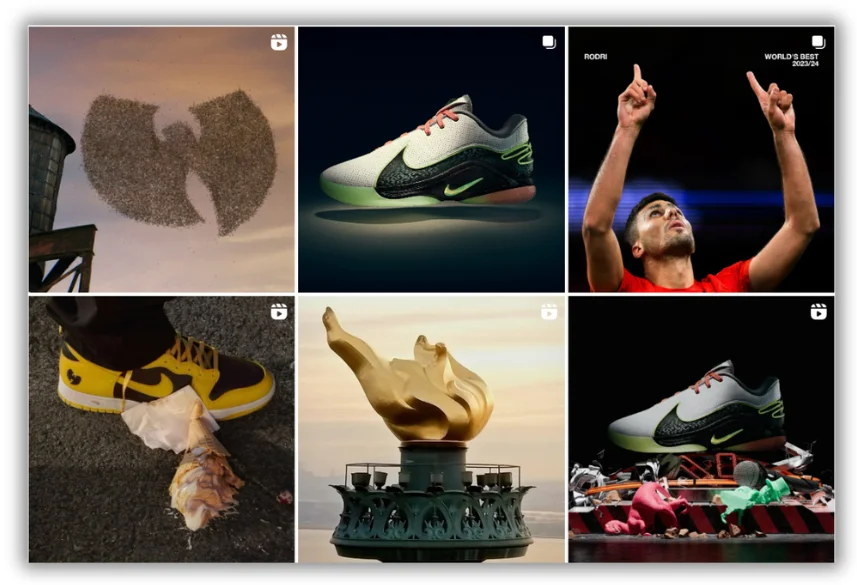
It’s not about pushing products—it’s about telling a story that makes people want to wear the swoosh and live the dream.
11. Experiential marketing
When people experience a brand first-hand, it’s way more powerful than any ad on a screen. It makes your brand real, and those real moments spark real emotions. And when your audience gets emotionally invested, they’re not just customers—they’re loyal fans. Experiential marketing lets you create buzz, increase brand awareness, and turn ordinary product interactions into experiences that people will remember.
The UK furniture brand, Loaf nails experiential marketing with its “Shacks”—immersive, real-world “slowrooms” (as they call them) that feel more like cozy little homes than your average retail space. It’s a tactile, sensory approach that turns the store visit into an experience, not just a transaction.

From a pinball machine and mini fridge with complimentary drinks to a table with puzzles and coloring pencils for children, Loaf redefines the in-store experience. These shacks become a destination—a place to escape the usual hectic shopping experience and, instead, slow down and vibe with the brand.
12. Upsell and cross-sell strategy
Upselling is when you nudge customers to go for the upgraded version of whatever they’re buying, while cross-selling is about showing them what other awesome stuff would pair perfectly with their purchase. When done right, it’s a win-win: the customer feels like they’re getting more value, and you get a bigger bite of their wallet.
Sephora shows customers multiple product recommendations based on their browsing history, past purchases, and even things like their skin tone or beauty preferences. This way, they make sure no customer leaves without buying more than they planned.

13. Try before you buy
“Try before you buy” is a game-changer in the world of retail. This concept lets customers test-drive your product before they commit to purchase. Giving customers the ability to try the product eliminates the fear of buyer’s remorse and shows customers you are confident in the products you sell.
Warby Parker uses this marketing strategy with the free home try-on. Here’s the deal: they let customers pick out five frames from their collection and have them shipped to their door for free. The fact that there’s no pressure and no commitment creates the ultimate stress-free shopping experience for their customers.
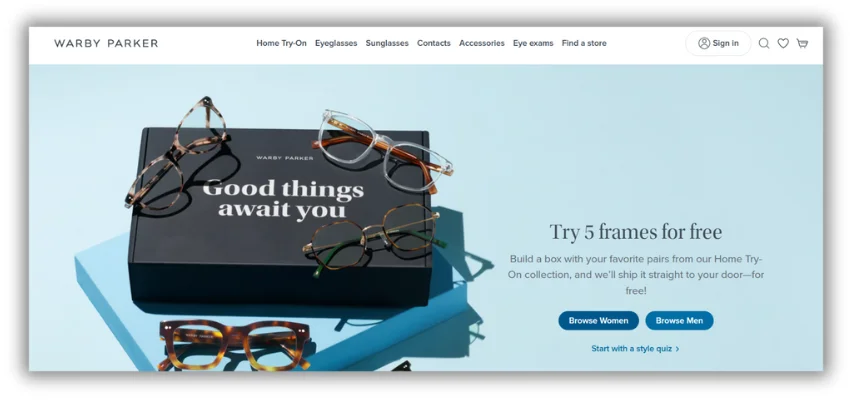
14. Paid media marketing strategy
By 2026, global ad spend is projected to hit $1.23 trillion—an 80% increase from pre-pandemic levels in 2019, according to WARC. Paid media, whether PPC ads, social media campaigns, or display ads, gives you the power to target specific audiences with laser focus, making sure your message lands exactly where it needs to.
Waterdrop uses strategic targeting and eye-catching visuals that resonate with its health-conscious audience. Whether it’s on Instagram, YouTube, or Facebook, Waterdrop uses snappy videos and influencer partnerships to show off its products in real-life situations—people dropping those little cubes into their water bottles like they’re performing a mini ritual.
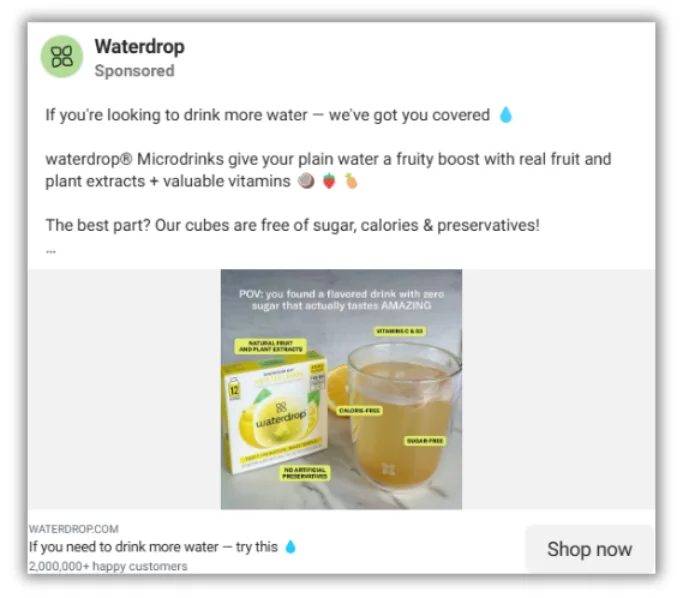
By hyper-targeting customers based on their interests and behavior, Waterdrop gets the right message in front of the right people, turning scrolls into sales.
15. User-generated content
According to EnTribe, 86% of shoppers are more likely to trust a brand that publishes user-generated content. The reason? It feels authentic and relatable. Plus, it creates a sense of community and belonging, which keeps people coming back. UGC helps build trust, boosts brand awareness, and gets more eyes on your product, all while deepening your relationship with your audience.
Drunk Elephant understands the power of user-generated content and is using it to boost its authenticity and make its customers feel like part of the brand. Rather than relying on slick, picture-perfect ads, Drunk Elephant encourages loyal fans to share their skincare routines, product reviews, and before-and-after shots, turning real customers into the brand’s ambassadors.

Moreover, UGC helps build social proof, which is huge in the beauty space where people are skeptical about what works and what doesn’t.
16. Affiliate marketing strategy
The affiliate marketing industry is expected to grow at a compound annual growth rate (CAGR) of 18.86% between 2023 and 2032, reaching a value of nearly $40 billion by the end of the forecast period. Affiliate marketing is the ultimate performance-based strategy, where you don’t pay for ads that might flop—you only pay when your affiliates actually deliver results. The beauty of affiliate marketing is that it’s a win-win—affiliates get a cut of the sale, and your brand gets exposed to a broader audience without the risk of throwing money at ads that don’t convert.
Amazon has mastered the art of affiliate marketing, and it’s a huge part of what makes their business model so successful. They’ve created an entire ecosystem with their Amazon Associates program, where anyone—from bloggers and influencers to niche websites—can sign up, share Amazon links, and earn a commission on sales.
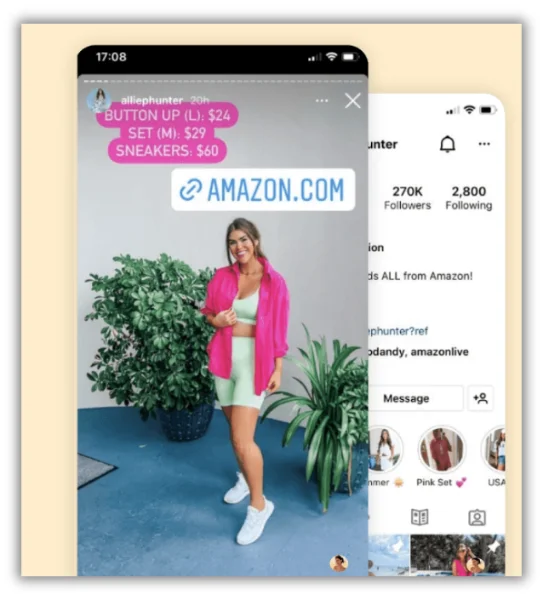
17. Multichannel marketing strategy
Customers nowadays don’t just stick to one channel anymore. They’ll research on Google, scroll through Instagram, and then maybe make a purchase through an email link. Here’s where multichannel marketing comes into the picture. Whether through email, social media, paid ads, or in-store experiences, multichannel marketing reinforces your message and increases the chances of conversion.
Whether you’re browsing the website, scrolling through Instagram, or walking into one of their stores, H&M ensures the brand experience is consistent across all channels. What makes H&M’s multichannel approach work so well is that they optimize the experience at every touchpoint, making sure customers feel engaged, informed, and ready to buy no matter how or where they interact with the brand.

Use these marketing strategy examples to create your own
And there you have it—17 marketing strategy examples from leading brands to inspire your next move. Ready to accelerate your business growth and unlock new revenue potential? Let’s talk.
